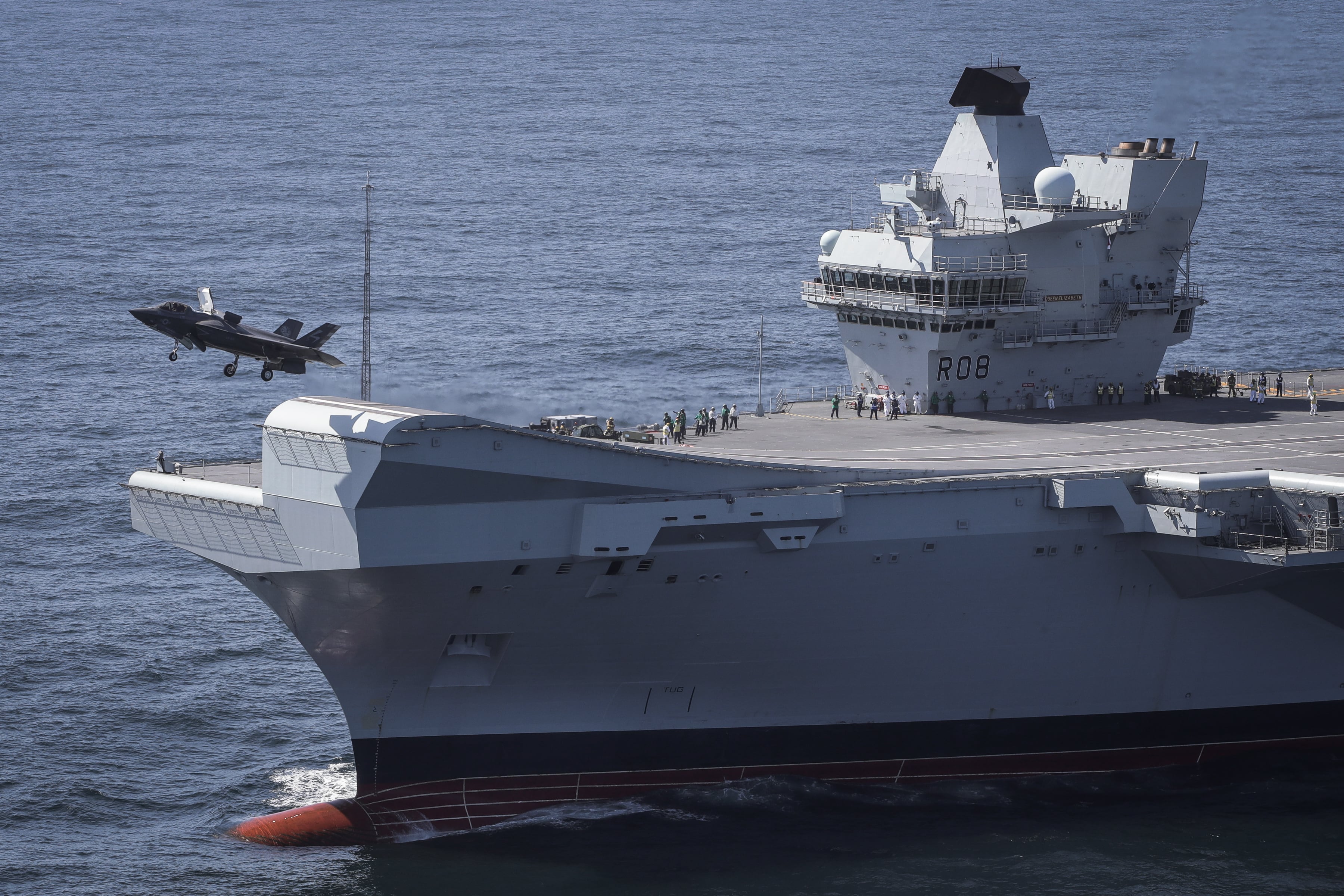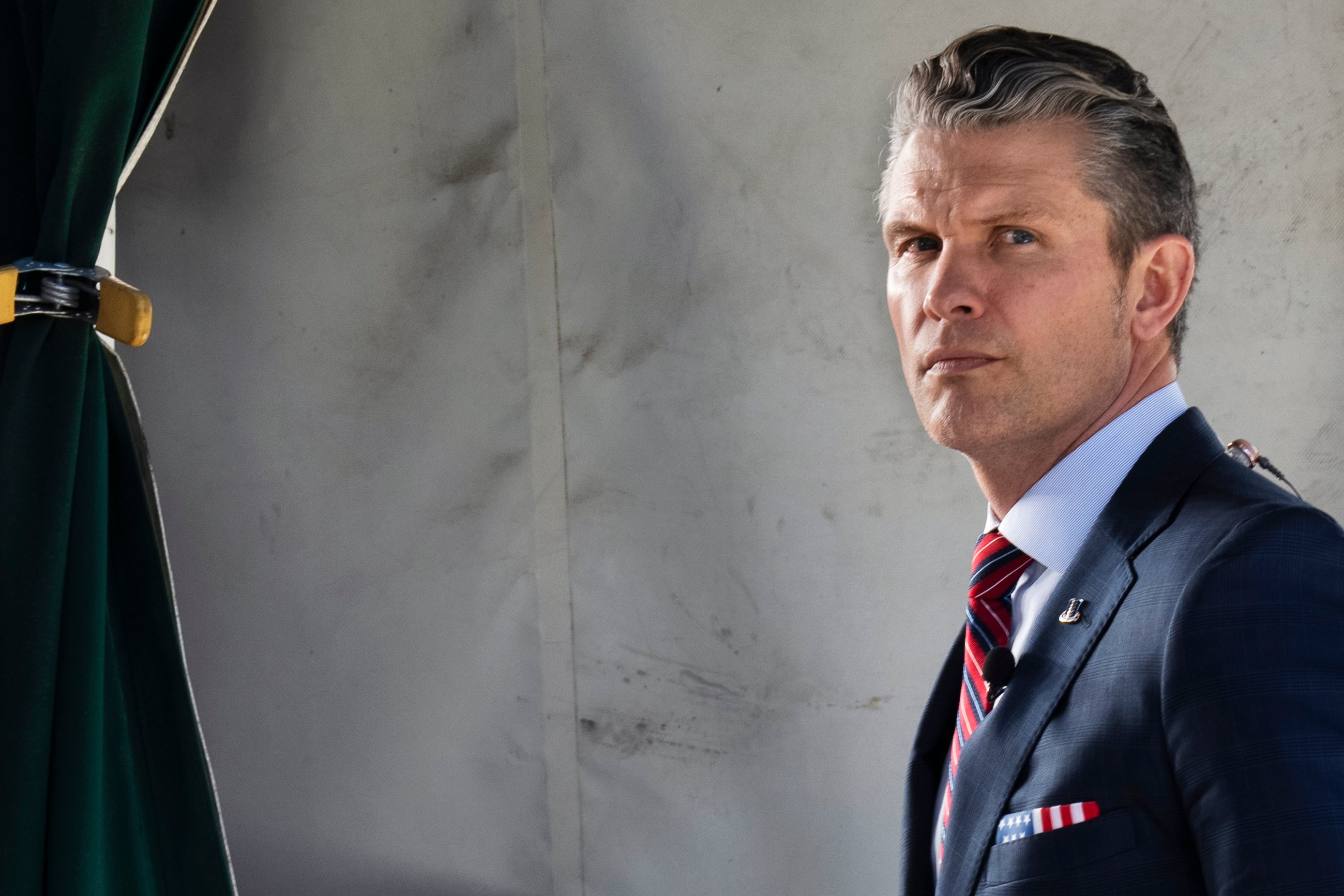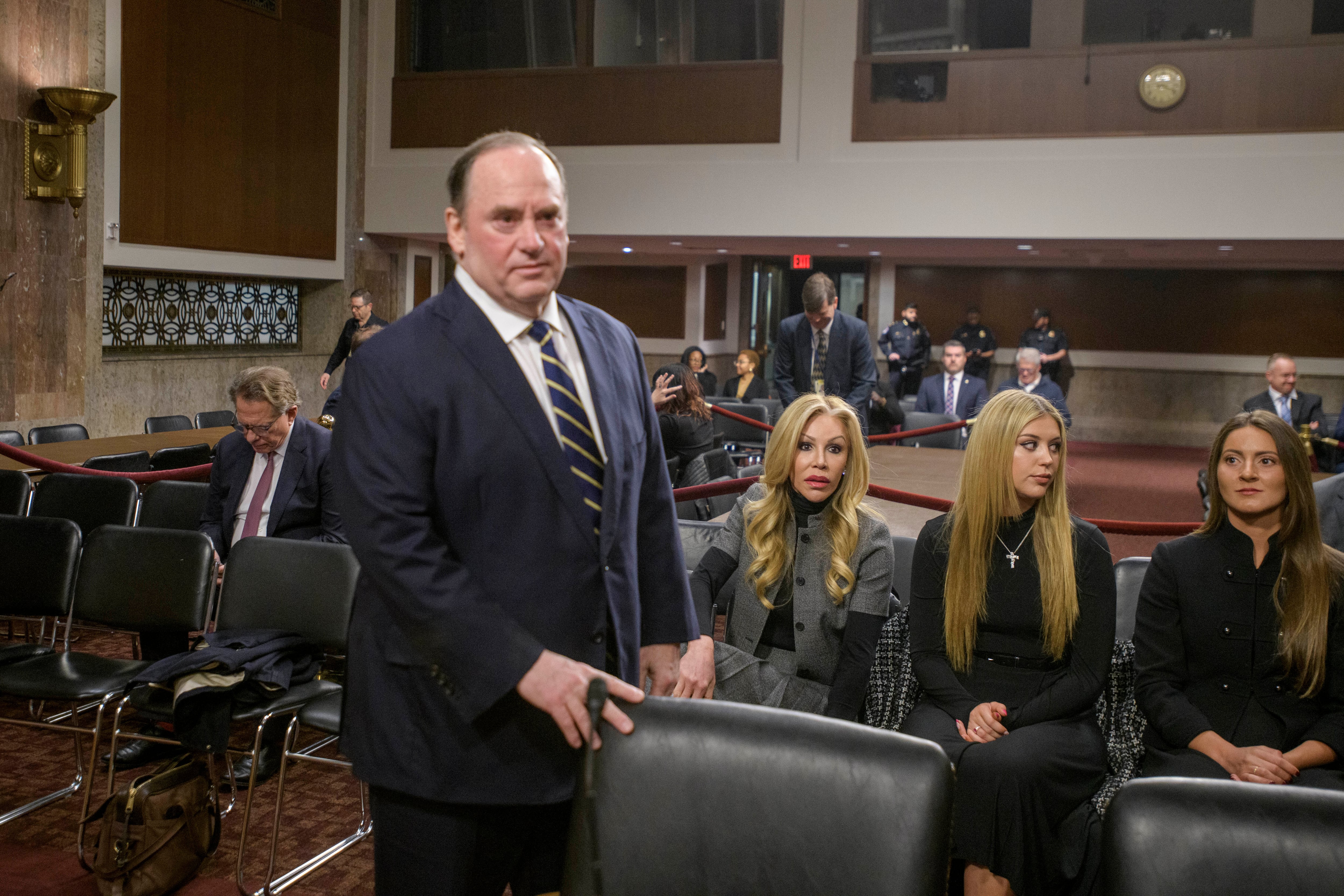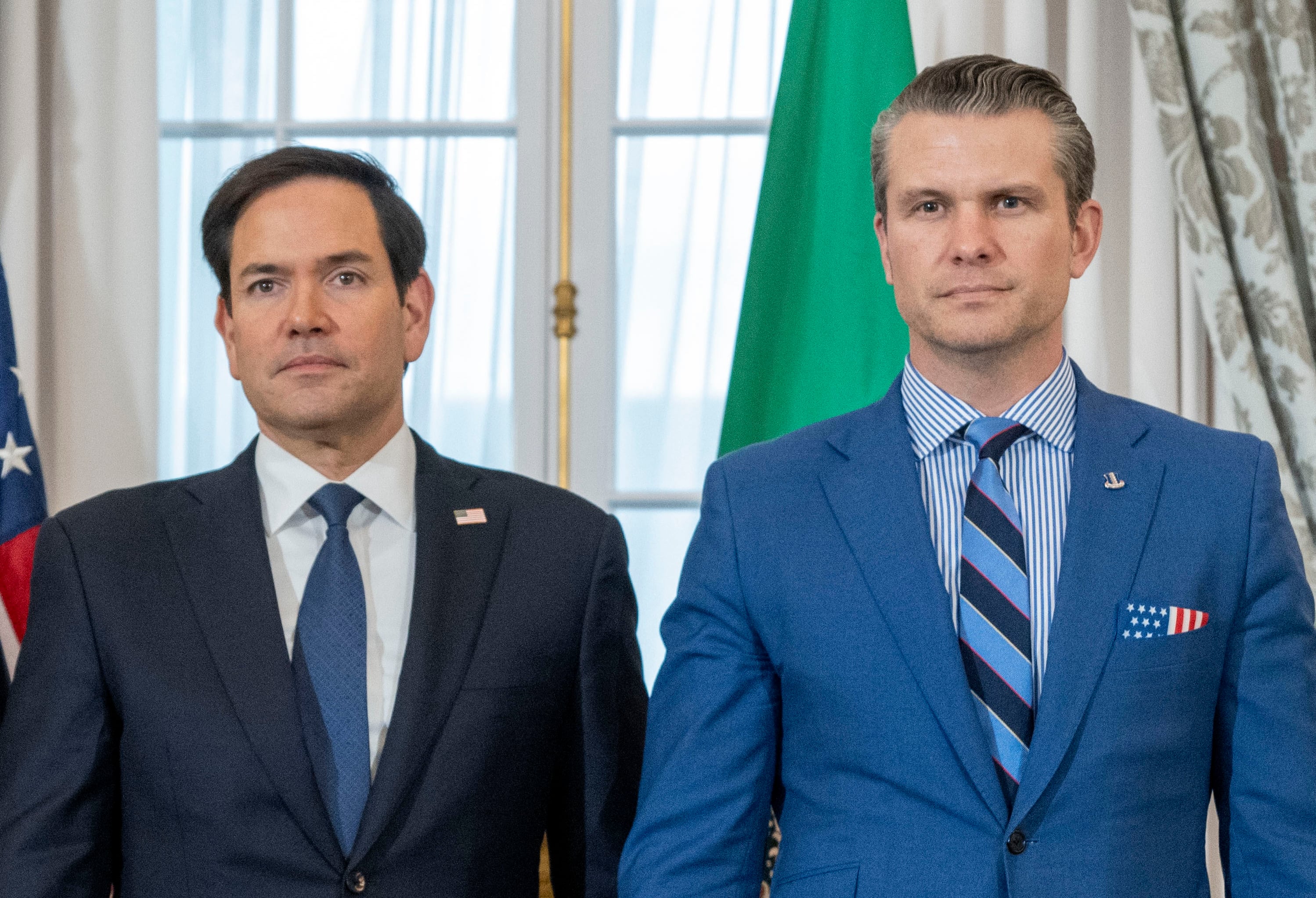The United States and the United Kingdom have signed a joint declaration for the Carrier Strike Group 2021 deployment — authorizing U.S. Marine Corps and U.S. Navy personnel and equipment to deploy with the U.K.’s carrier strike group headed by the aircraft carrier Queen Elizabeth.
The Pentagon said Tuesday the arrangement involves a detachment of Marine Corps F-35B Lightning II aircraft, along with the U.S. Navy’s guided-missile destroyer The Sullivans.
“This deployment underscores the strength of our bilateral ties and demonstrates U.S.-UK interoperability, both of which are key tenets of the U.S. National Defense Strategy,” the Pentagon said in a statement.
Acting Secretary of Defense Christopher Miller and U.K. Secretary of State for Defense Ben Wallace signed off on the agreement, and the carrier strike group is poised to depart Portsmouth in the United Kingdom for the deployment later this year.
The carrier strike group is expected to operate in the Mediterranean, and the Indian and Pacific oceans, based on previous comments from U.K. Prime Minister Boris Johnson. That’s expected to include Singapore, South Korea, Japan and Oman. Specific dates for the deployment have not yet been disclosed.
The official agreement comes after the U.K.’s Ministry of Defence announced on Jan. 4 that the carrier strike group had reached initial operating capability for all naval and air elements. The carrier strike group is expected to reach full operating capability in December 2023.
The Marine Corps said in the fall that a full deployment with U.S. and U.K. forces would occur in 2021.
The U.S. military has been regularly flying its short-takeoff-and-vertical-landing F-35Bs from the deck of the 65,000-ton Queen Elizabeth as the new carrier tests its capabilities. In September, 10 Lightning IIs from Marine Fighter Attack Squadron 21, known as the Wake Island Avengers, participated in a joint, multinational exercise with the Queen Elizabeth and the United Kingdom’s Joint Squadron 617, the Dambusters. The exercise was designed to enhance the interoperability between the U.S. and U.K. forces.
The inclusion of Marine combat jets on the warship has long been planned by the two governments, not least because Britain has a modest numbers of F-35Bs available.
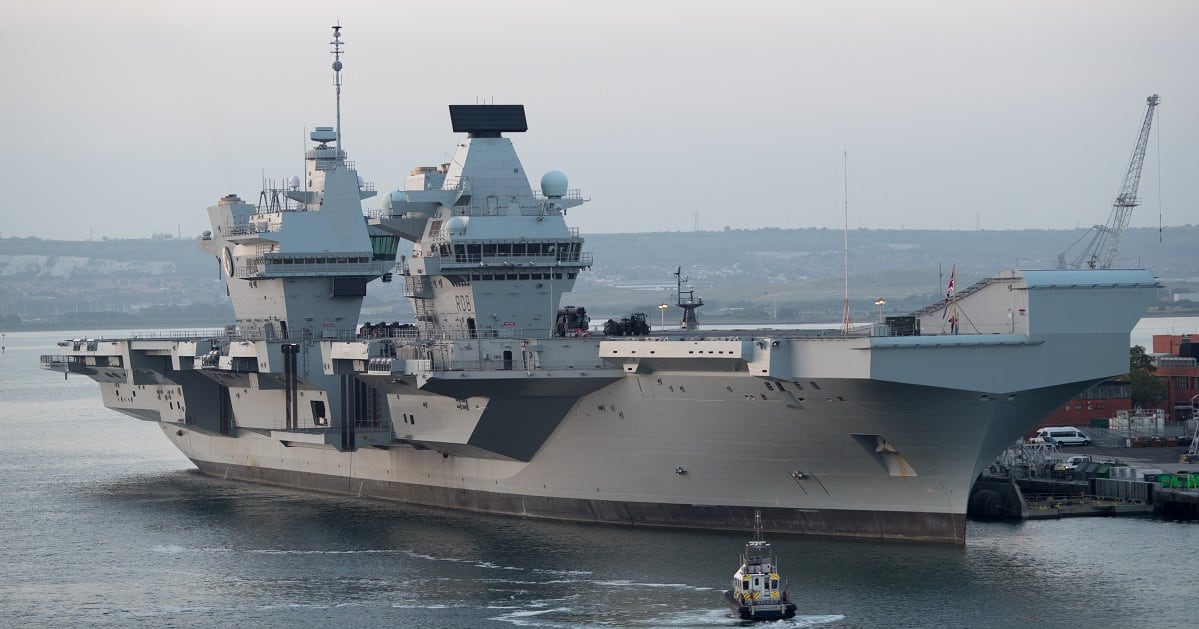
“Imagine a world where you’re agnostic as to whether the ship you are operating from has USS or HMS on it,” Col. Simon Doran, the U.S. senior national representative to the U.K.’s carrier strike group, told Marine Corps Times in October. “That really increases the flexibility and the potential lethality of both nations.”
One key feature of the Queen Elizabeth, which was commissioned in December 2017, is its “ski-jump” ramp for aircraft to use while taking off.
Commodore Steve Moorhouse, commander U.K. CSG, said in a Marine Corps news release that the carrier strike group puts “real muscle back into NATO; and sends a clear signal that the United Kingdom takes its global role seriously.”
The Marine Corps said that Commandant Gen. David Berger, Sergeant Major of the Marine Corps Troy Black, Secretary of the Navy Kenneth Braithwaite and Air Force Gen. Tod D. Wolters, the head of U.S. European Command and NATO’s supreme allied commander Europe, were among those who visited the Queen Elizabeth during the exercise.
“In today’s operating environment, success will require unity of effort, operational flexibility, and the integrated application of Navy and Marine capabilities in the maritime domain,” Berger said in a Marine Corps news release. “The United States and United Kingdom forward-deployed forces remain ready to respond to crises globally as a combined maritime force-in readiness.”
Defense News staff writer Andrew Chuter controbuted to this report.
